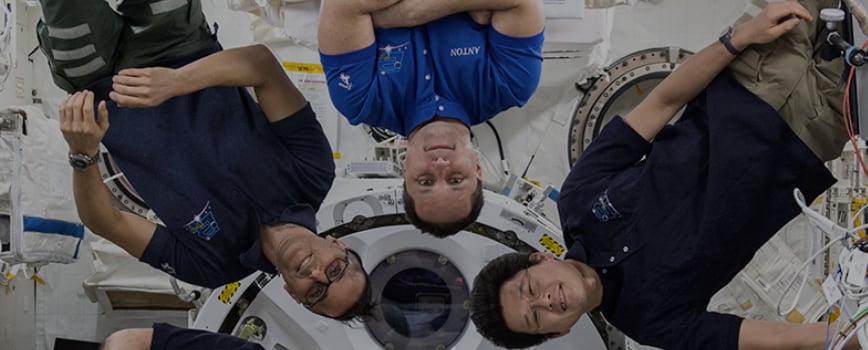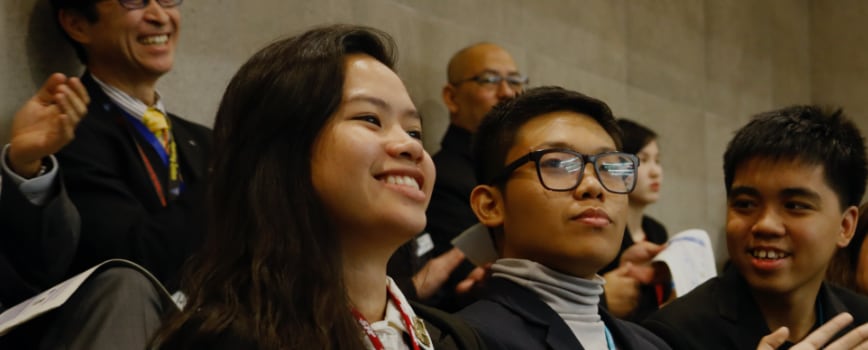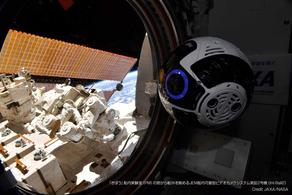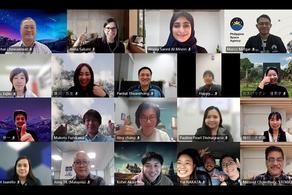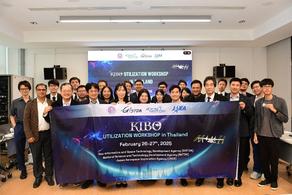- Announcements
Asian Try Zero-G 2022 Experimental Theme Finalized
- Experiment at Kibo
- Kibo Utilization Office for Asia (KUOA)
Summary
Selection Results (Alphabetical order)
| Japan | Self-assembly of granular gas and three-dimensional pattern formation in a microgravity environment |
| The Philippines | Rotation of ‘Dumbbell-shaped’ objects in Space |
| Singapore | Double Pendulum in space |
| Taiwan | The Water Vortex in Zero Gravity Condition |
| Thailand | Water sphere disturbance in zero gravity |
| Thailand | Study of the height of water which is risen up in microgravity |
** Participating countries/region by alphabetical order: Australia, Bangladesh, Japan, Nepal, Philippines, Singapore, Taiwan, Thailand
Preliminary Selection
Case of Preliminary Selection in Thailand
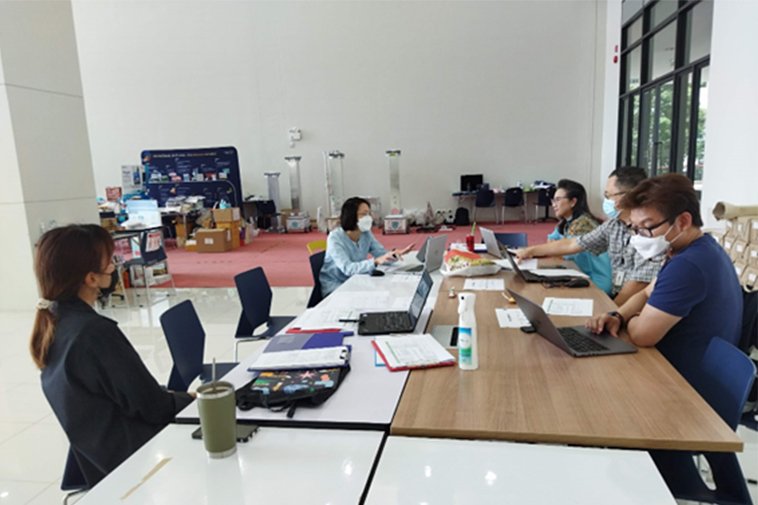
Final Selection
All participants in the final selection concluded by selecting 6 experiment themes***.
Astronaut Wakata will conduct the selected experiment themes this upcoming winter.
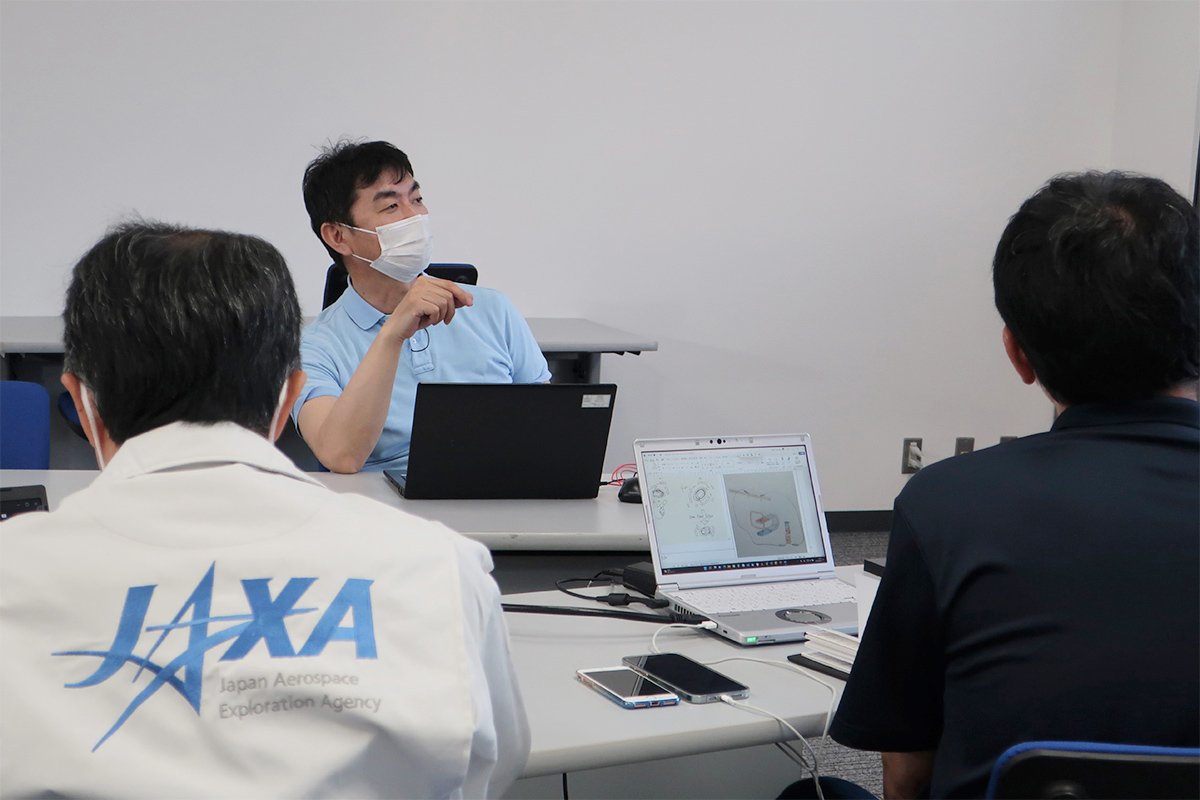
Asian Try Zero-G 2022 Selected Themes
Category2: Individual or group applicants, 27 years old and younger
Self-assembly of granular gas and three-dimensional pattern formation in a microgravity environment
| Japan (Category 2) University of Tsukuba/ The University of Tokyo/ Nippon Veterinary and Life Science University, Group of 3 |
When the granular gas is left unattended, it loses energy due to collisions between particles, and the particles gradually aggregate to form clusters. The experiment reproduces this with copper beads. 
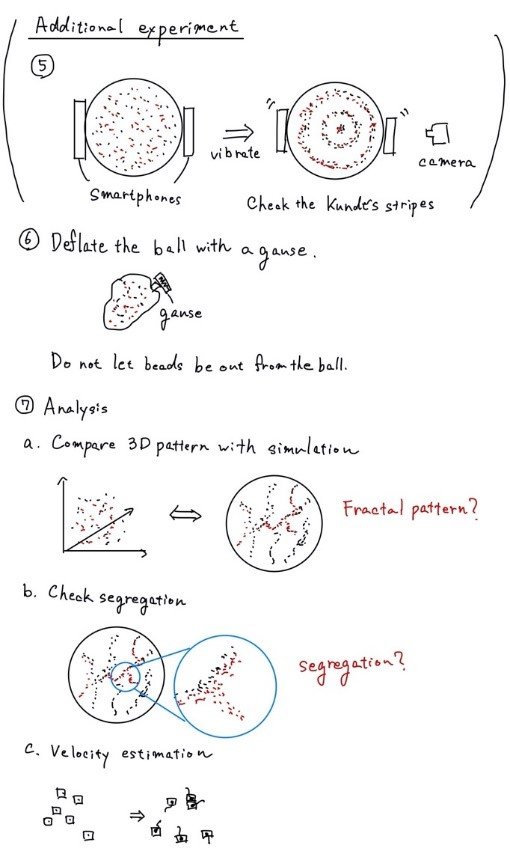
|
<Points of Selection>
This theme is an excellent proposal that is expected to produce scientific results. It is a simple but thorough scientific verification plan to be conducted in orbit.
Rotation of ‘Dumbbell-shaped’ objects in Space
| Philippines (Category 2) University of the Philippines |
The " dumbbell-shaped" rotating body can rotate along a horizontal axis around a vertical axis, and has only two main moments of inertia, so rotation along the main axis is stable and the Dzhanibekov effect* is not expected to occur. We will verify this using two rigid bodies whose centers of gravity are known to be different. ( Previously, a video of this effect has been reproduced using pliers, but this is the first comparative verification.) 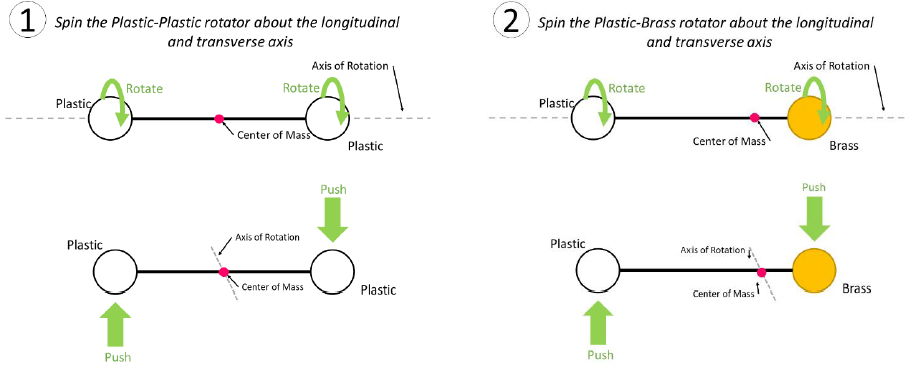
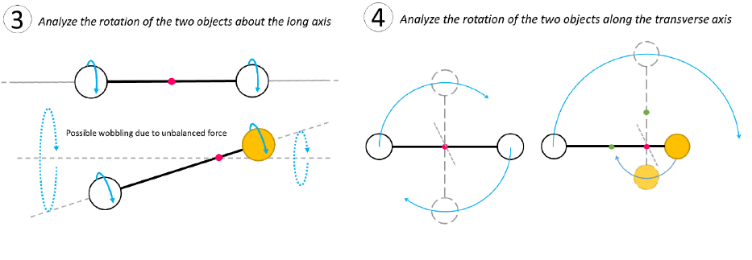
|
<Points of Selection>
This theme aims to systematically examine the behavior of rotating objects in orbit and the Dzhanibekov effect by means of two rigid bodies with different centers of gravity.
Double Pendulum in space
| Singapore (Category 1) Catholic High School, Group of 4 |
The double pendulum is known to exhibit unpredictable motion on earth due to its increased degrees of freedom and is a classic case of chaos. In a microgravity environment, we will observe how the double pendulum exhibits more disordered behavior when a force is applied to specific positions of the double pendulum (at the joints, at the middle of the second section, and at the end points). 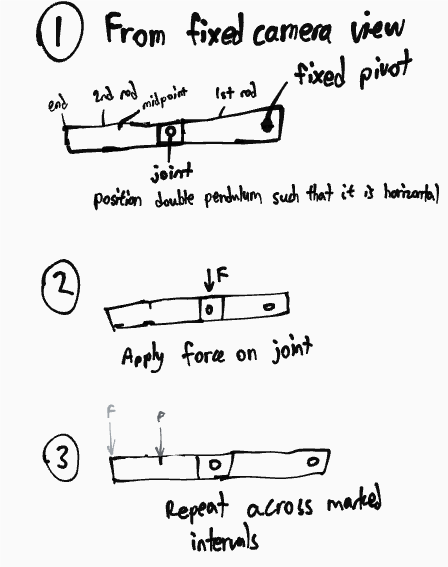
|
<Points of Selection>
This theme is a proposal that has never been implemented in Asian Try Zero-G before. It is expected to observe unpredictable states in a microgravity environment, in contrast to operations on the ground.
The Water Vortex in Zero Gravity Condition
| Taiwan (Category 2) National Central University |
On the ground, when water in a bottle is rotated, a water vortex occurs; verify whether a water vortex occurs in a microgravity environment where there is no downward force and how the water in the rotating body behaves. 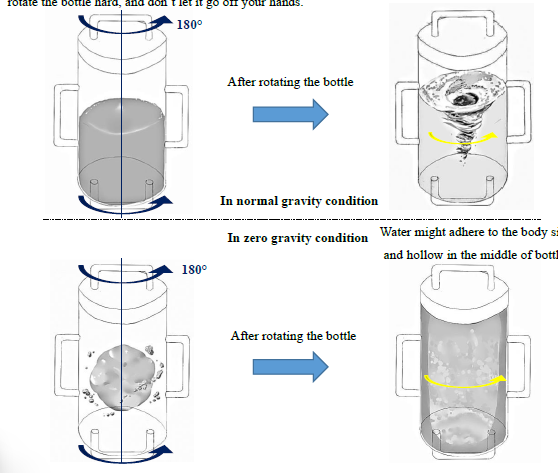
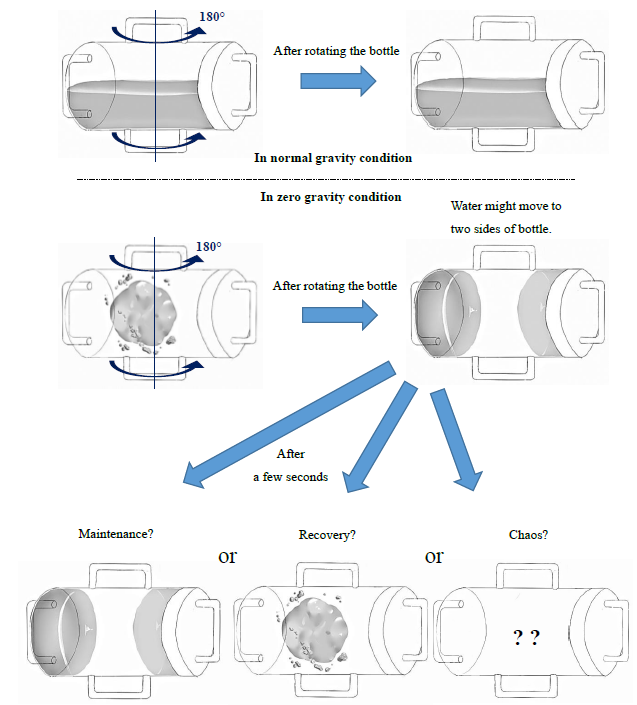
|
A similar proposal has been received from Singapore. Under the leadership of the Taiwanese team, it is planned to share information on the results of the experiment with Singapore.
<Points of Selection>
This theme is a proposal to observe water vortices in two different rotations using a cylindrical bottle. It is a proposal that effectively use a single bottle in an orbit where resources are limited.
Water sphere disturbance in zero gravity
| Thailand (Category 1) Mahidol Wittayanusorn School |
The water sphere in a microgravity environment becomes perfectly spherical as the effect of surface tension becomes more pronounced. Two experiments will be conducted on this water sphere to observe the state of the water sphere. In the first experiment, the kinetic energy is changed by using two spherical rigid bodies (balls) of different masses, and the state of the water and rigid bodies is observed when they collide with the water sphere that forms a spherical shape due to surface tension. In the second experiment, a rigid body (frame) with angular velocity is brought into contact with a water ball forming a sphere, and the state of the frame and the water ball is observed. 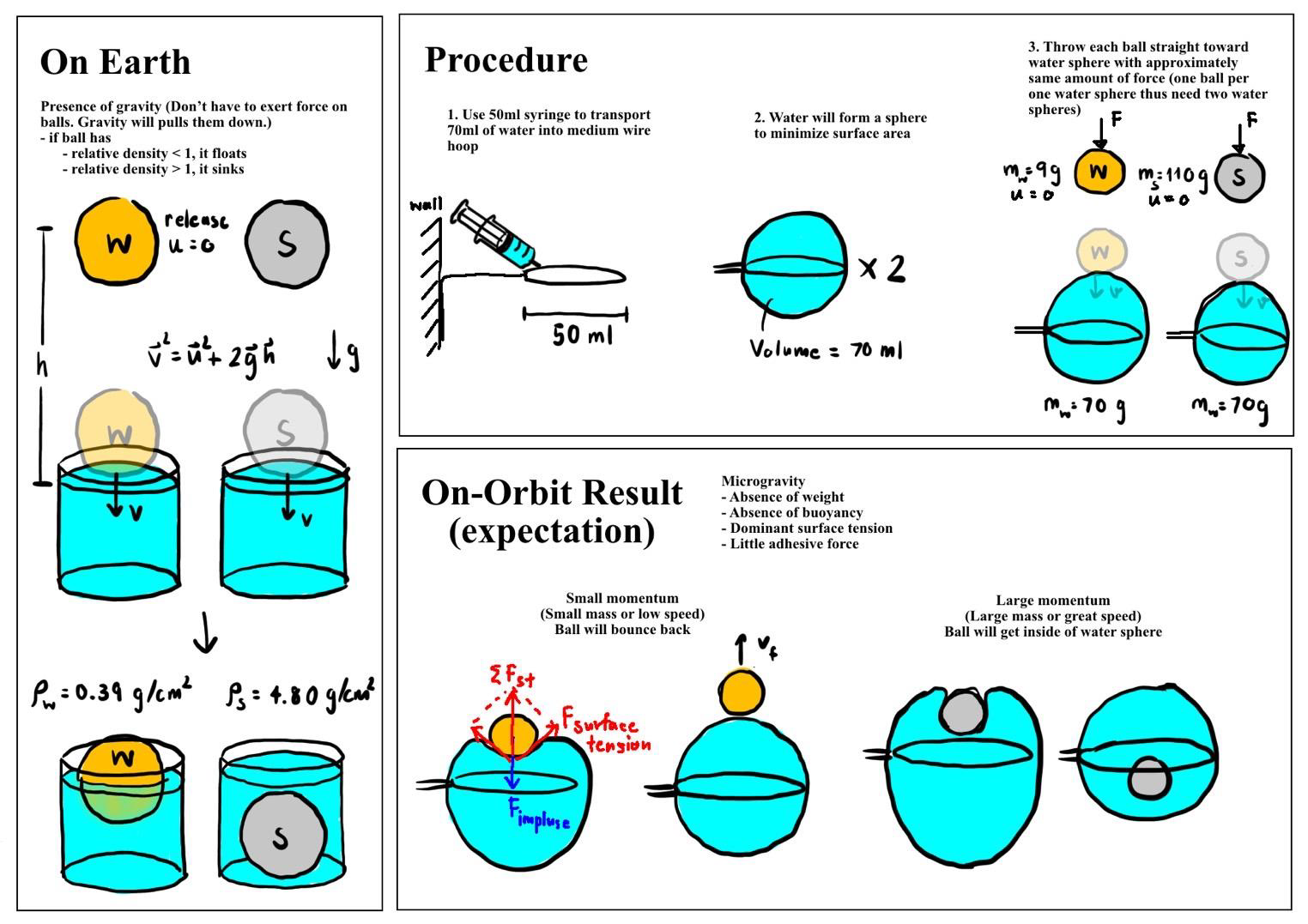
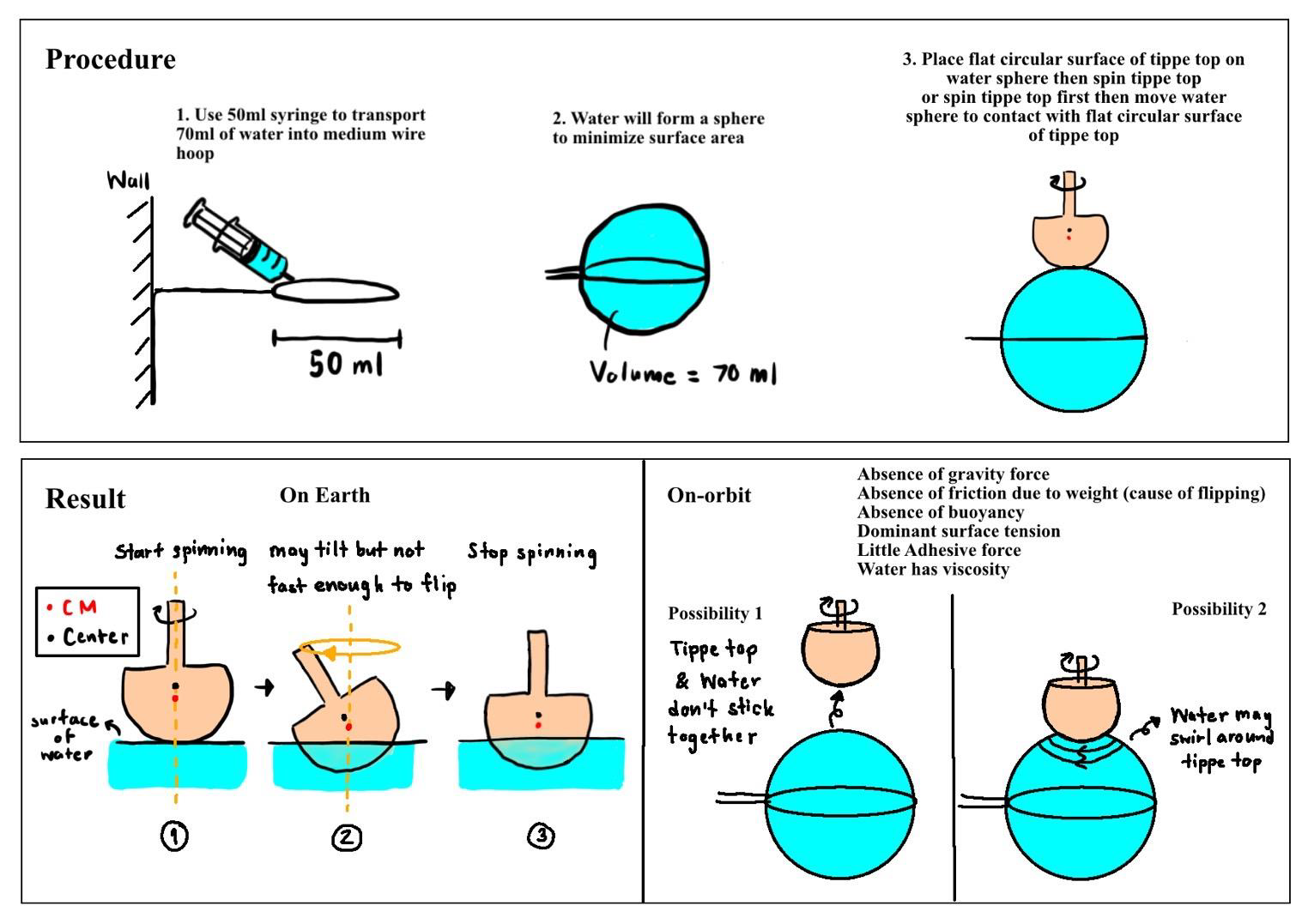
|
<Points of Selection>
While previous Asian Try Zero-G projects have observed the dynamics of two liquids with different specific gravities, this is the first proposal to observe the dynamic state of liquids and solids.
Study of the height of water which is risen up in microgravity
| Thailand (Category 2) Thammasat University |
Capillary action in a microgravity environment is verified by measuring height. The height caused by capillary action is considered to depend on parameters such as the density of the liquid (𝜌𝜌), surface tension (T), radius of the tube (r), contact angle (𝜃𝜃), and standard acceleration due to gravity (g) In a microgravity environment, where the effect of gravity is much less than on the ground, it is estimated to be 1.11 times higher than the height of the earth. We will verify the reasonableness of this estimate using microcapillaries of different diameters and straws. 
|
<Points of Selection>
A few experiments have been conducted on capillary phenomena in microgravity environments. In this theme, a sufficient theoretical hypothesis has been examined in advance, and is a proposal to analyze the phenomenon quantitatively.
Unless specified otherwise, rights to all images belong to ©JAXA




